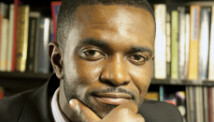GAO, Mali (Reuters) - Islamist insurgents launched a surprise raid in the heart of the Malian town of Gao on Sunday, battling French and local troops in a blow to efforts to secure Mali's recaptured north.
Local residents hid in their homes or crouched behind walls as the crackle of gunfire from running street battles resounded through the sandy streets and mud-brick houses of the ancient Niger River town, retaken from Islamist rebels last month by a French-led offensive.
French helicopters clattered overhead and fired on al Qaeda-allied rebels armed with AK-47s and rocket-propelled grenades who had infiltrated the central market area and holed up in a police station, Malian and French officers said.
The fighting inside Gao was certain to raise fears that pockets of determined Islamists who have escaped the lightning four-week-old French intervention in Mali will strike back with guerrilla attacks and suicide bombings.
After driving the bulk of the insurgents from major northern towns such as Timbuktu and Gao, French forces are trying to search out their bases in the remote and rugged Adrar des Ifoghas mountains, far up in the northeast.
But with Mali's weak army unable to secure recaptured zones, and the deployment of a larger African security force slowed by delays and kit shortages, vast areas to the rear of the French forward lines now look vulnerable to guerrilla activity.
"They infiltrated the town via the river. We think there were about 10 of them. They were identified by the population and they went into the police station," said General Bernard Barrera, commander of French ground operations in Mali.
He told reporters in Gao that French helicopters had intervened to help Malian troops pinned down by the rebels, who threw grenades from rooftops.
Malian gendarme Colonel Saliou Maiga told Reuters the insurgents intended to carry out suicide attacks in the town.
SUICIDE BOMBERS
No casualty toll was immediately available. But a Reuters reporter in Gao saw one body crumpled over a motorcycle. Malian soldiers said some of the raiders may have come on motorbikes.
The gunfire in Gao erupted hours after French and Malian forces reinforced a checkpoint on the northern outskirts that had been attacked for the second time in two days by a suicide bomber.
Abdoul Abdoulaye Sidibe, a Malian parliamentarian from Gao, said the rebel infiltrators were from the MUJWA group that had held the town until French forces liberated it late last month.
MUJWA is a splinter faction of al Qaeda's North African wing AQIM which, in loose alliance with the home-grown Malian Islamist group Ansar Dine, held Mali's main northern urban areas for 10 months until the French offensive drove them out.
Late on Saturday, an army checkpoint in Gao's northern outskirts came under attack by a group of Islamist rebels who fired from a road and bridge that lead north through the desert scrub by the Niger River to Bourem, 80 km (50 miles) away.
"Our soldiers came under heavy gunfire from jihadists from the bridge ... At the same time, another one flanked round and jumped over the wall. He was able to set off his suicide belt," Malian Captain Sidiki Diarra told reporters.
The bomber died and one Malian soldier was lightly wounded, he added. In Friday's motorbike suicide bomber attack, a Malian soldier was also injured.
Diarra described Saturday's bomber as a bearded Arab.
Since Gao and the UNESCO World Heritage city of Timbuktu were retaken last month, several Malian soldiers have been killed in landmine explosions on a main road leading north.
French and Malian officers say pockets of rebels are still in the bush and desert between major towns and pose a threat of hit-and-run guerrilla raids and bombings.
"We are in a dangerous zone... we can't be everywhere," a French officer told reporters, asking not to be named.
One local resident reported seeing a group of 10 armed Islamist fighters at Batel, just 10 km (6 miles) from Gao.
OPERATIONS IN NORTHEAST
The French, who have around 4,000 troops in Mali, are now focusing their offensive operations several hundred kilometers (miles) north of Gao in a hunt for the Islamist insurgents.
On Friday, French special forces paratroopers seized the airstrip and town of Tessalit, near the Algerian border.
From here, the French, aided by around 1,000 Chadian troops in the northeast Kidal region, are expected to conduct combat patrols into the Adrar des Ifoghas mountains.
The remaining Islamists are believed to have hideouts and supply depots in a rugged, sun-blasted range of rocky gullies and caves, and are also thought to be holding at least seven French hostages previously seized in the Sahel.
The U.S. and European governments back the French-led operation as a defense against Islamist jihadists threatening wider attacks, but rule out sending their own combat troops.
To accompany the military offensive, France and its allies are urging Mali authorities to open a national reconciliation dialogue that addresses the pro-autonomy grievances of northern communities like the Tuaregs, and to hold democratic elections.
Interim President Dioncounda Traore, appointed after a military coup last year that plunged the West African state into chaos and led to the Islamist occupation of the north, has said he intends to hold elections by July 31.
But he faces splits within the divided Malian army, where rival units are still at loggerheads.
(Additional reporting by Tiemoko Diallo and Adama Diarra in Bamako; Writing by Joe Bavier and Pascal Fletcher; Editing by Kevin Liffey)

